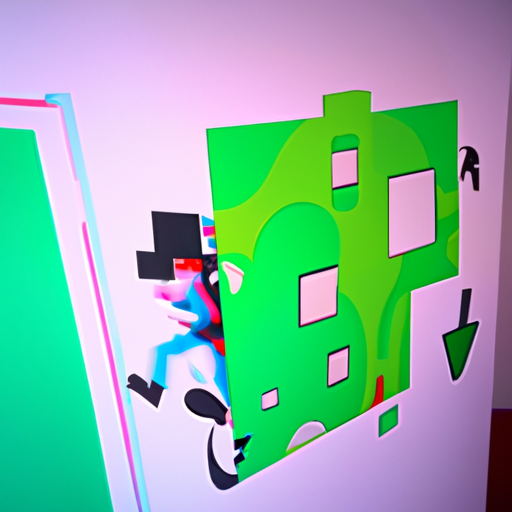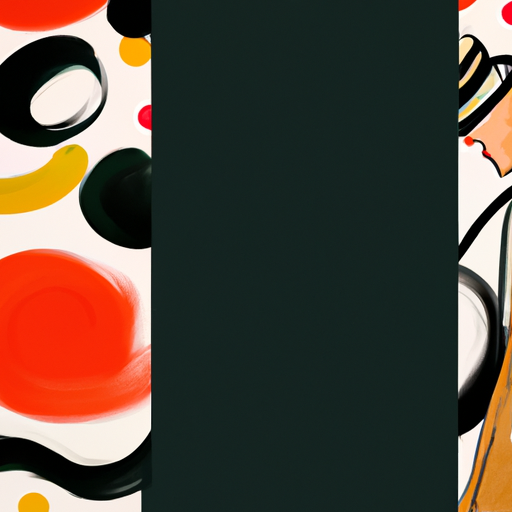
-
Table of Contents
- Motion Graphics: Bringing Designs to Life through Animation
- What are Motion Graphics?
- The Role of Motion Graphics in Design
- Examples of Motion Graphics in Action
- 1. Title Sequences in Films
- 2. Explainer Videos
- 3. Advertising and Commercials
- 4. User Interfaces and App Design
- The Process of Creating Motion Graphics
- 1. Concept and Storyboarding
- 2. Design and Asset Creation
- 3. Animation and Timing
- 4. Sound Design and Integration
- 5. Export and Delivery
- The Impact of Motion Graphics on Design
- 1. Enhanced Visual Communication
- 2. Improved User Experience
- 3. Increased Brand Recognition
Motion Graphics: Bringing Designs to Life through Animation

Animation has long been a powerful tool for storytelling and visual communication. From the early days of hand-drawn cartoons to the rise of computer-generated imagery (CGI), animation has captivated audiences and brought imagination to life. In recent years, motion graphics have emerged as a popular form of animation, combining design elements with movement to create visually stunning and engaging content. In this article, we will explore the world of motion graphics, its applications, and the impact it has on design.
What are Motion Graphics?
Motion graphics can be defined as animated graphic design. It is the art of bringing static designs to life through movement, typically using software tools such as Adobe After Effects or Cinema 4D. Unlike traditional animation, which often involves characters and narratives, motion graphics focus on visual communication and conveying information in a dynamic and engaging way.
At its core, motion graphics involve the manipulation of shapes, colors, typography, and imagery to create visually appealing animations. These animations can range from simple transitions and logo reveals to complex visual effects and data visualizations. The possibilities are endless, and motion graphics can be found in various mediums, including films, television, advertising, user interfaces, and online content.
The Role of Motion Graphics in Design
Motion graphics play a crucial role in enhancing the overall design experience. They add a layer of interactivity and engagement that static designs often lack. By incorporating movement, designers can create a more immersive and memorable experience for their audience.
One of the key advantages of motion graphics is their ability to convey complex information in a concise and visually appealing manner. For example, in a corporate presentation, a motion graphic can be used to illustrate data trends or explain a complex process in a way that is easy to understand. By animating charts, graphs, and diagrams, designers can make information more accessible and engaging.
Motion graphics also have a significant impact on user interfaces (UI) and user experience (UX) design. They can guide users through a website or application, providing visual cues and feedback. For instance, a loading animation can indicate that a process is in progress, reducing user frustration and improving the overall experience. Similarly, motion graphics can be used to highlight interactive elements or provide visual feedback when a user interacts with a button or menu.
Examples of Motion Graphics in Action
To better understand the power of motion graphics, let’s explore some real-world examples where they have been effectively utilized:
1. Title Sequences in Films
One of the most iconic uses of motion graphics is in the opening title sequences of films. These sequences set the tone for the movie and create anticipation among the audience. A great example is the opening sequence of the James Bond films, where animated graphics and typography combine to create a visually stunning introduction.
2. Explainer Videos
Explainer videos have become increasingly popular in recent years, as they offer a concise and engaging way to explain complex concepts or promote products and services. Motion graphics are often used in explainer videos to simplify information and make it more visually appealing. Companies like Dropbox and Slack have effectively used motion graphics in their explainer videos to communicate their value propositions.
3. Advertising and Commercials
Motion graphics are widely used in advertising and commercials to grab attention and convey messages effectively. For example, the Coca-Cola “Happiness Factory” commercial used motion graphics to bring a fantastical world to life, capturing the imagination of viewers and leaving a lasting impression.
4. User Interfaces and App Design
Mobile apps and websites often incorporate motion graphics to enhance the user experience. For instance, the popular ride-sharing app Uber uses motion graphics to provide real-time feedback on the location of the driver and the estimated time of arrival. These animations not only make the app more visually appealing but also improve the overall usability.
The Process of Creating Motion Graphics
Creating motion graphics involves a series of steps, from conceptualization to final delivery. Here is a general overview of the process:
1. Concept and Storyboarding
The first step in creating motion graphics is to define the concept and storyboard the animation. This involves sketching out the key scenes and transitions to visualize how the animation will flow. Storyboarding helps in planning the timing, composition, and overall structure of the animation.
2. Design and Asset Creation
Once the concept is finalized, designers move on to creating the visual assets for the animation. This includes designing the characters, backgrounds, typography, and any other elements that will be animated. Designers often use software tools like Adobe Illustrator or Photoshop to create these assets.
3. Animation and Timing
With the assets ready, the next step is to bring them to life through animation. Designers use software tools like Adobe After Effects or Cinema 4D to animate the elements, applying keyframes and adjusting timing to create smooth and fluid movements. This stage requires a keen eye for detail and a good understanding of animation principles.
4. Sound Design and Integration
Sound design plays a crucial role in enhancing the impact of motion graphics. Adding sound effects, music, and voiceovers can bring the animation to life and create a more immersive experience. Designers often collaborate with audio professionals to ensure that the sound complements the visuals and enhances the overall storytelling.
5. Export and Delivery
Once the animation is complete, it needs to be exported in the appropriate format for its intended use. For example, animations for web use may need to be exported as GIFs or HTML5 files, while animations for video production may require rendering in high-definition formats. The final deliverable is then ready to be integrated into the desired medium, whether it be a film, website, or application.
The Impact of Motion Graphics on Design
Motion graphics have revolutionized the world of design by adding a new dimension of interactivity and engagement. Here are some key ways in which motion graphics have impacted the design industry:
1. Enhanced Visual Communication
Motion graphics have made it easier to convey complex information in a visually appealing and concise manner. By animating data visualizations, designers can make statistics and trends more accessible and engaging. This has been particularly useful in fields such as education, marketing, and journalism, where information needs to be communicated effectively.
2. Improved User Experience
Motion graphics have significantly improved the user experience in various digital platforms. By providing visual cues and feedback, motion graphics guide users through interfaces and make interactions more intuitive. This has led to a more enjoyable and seamless user experience, resulting in increased user satisfaction and engagement.
3. Increased Brand Recognition
Motion graphics have become an integral part of
